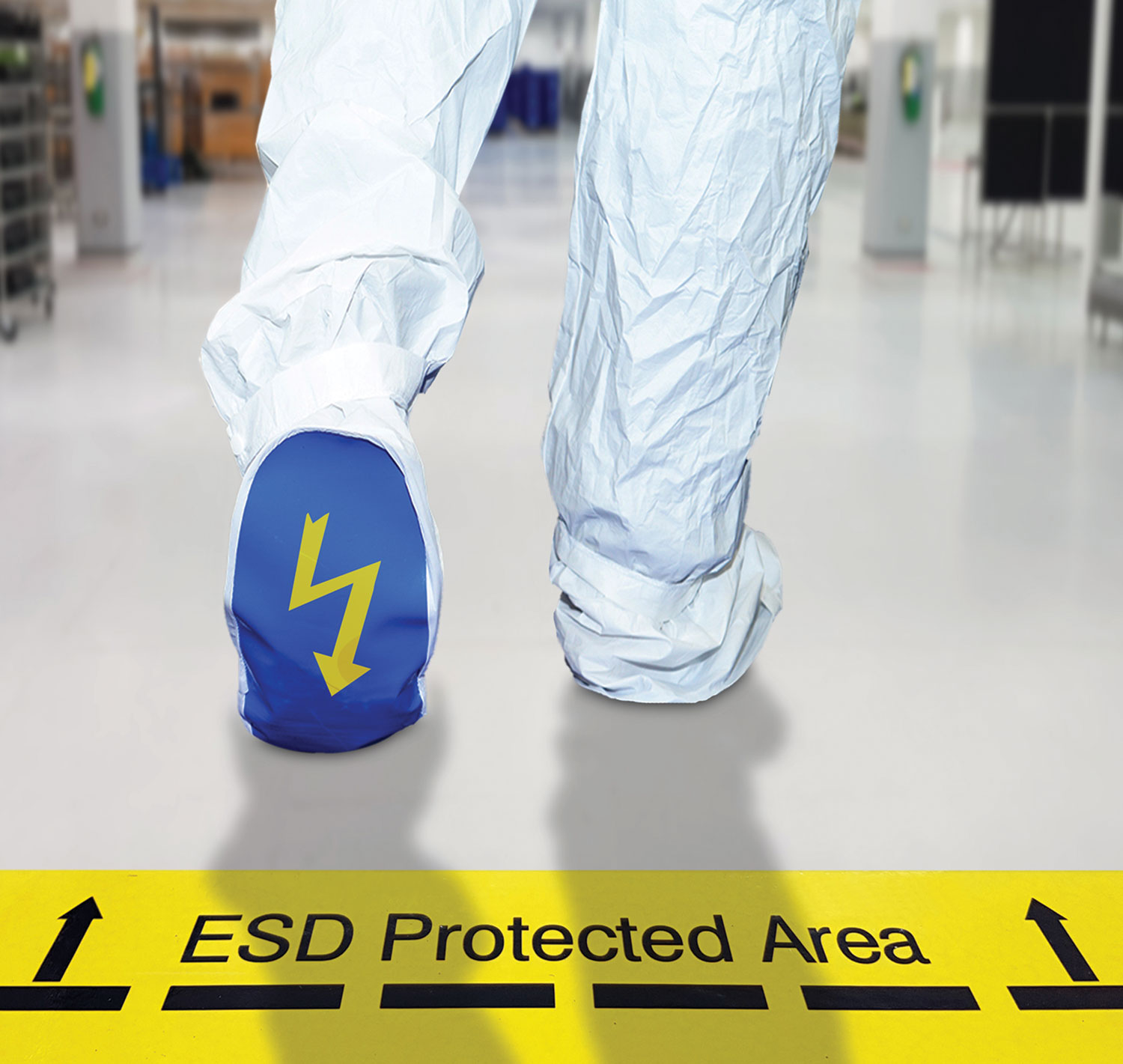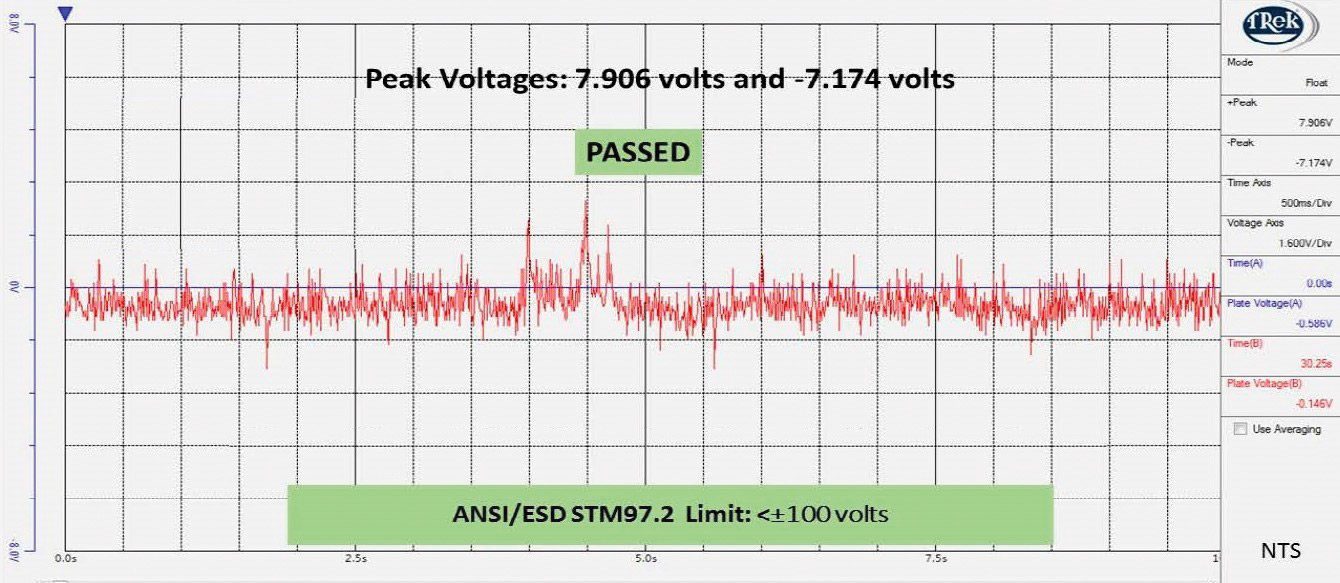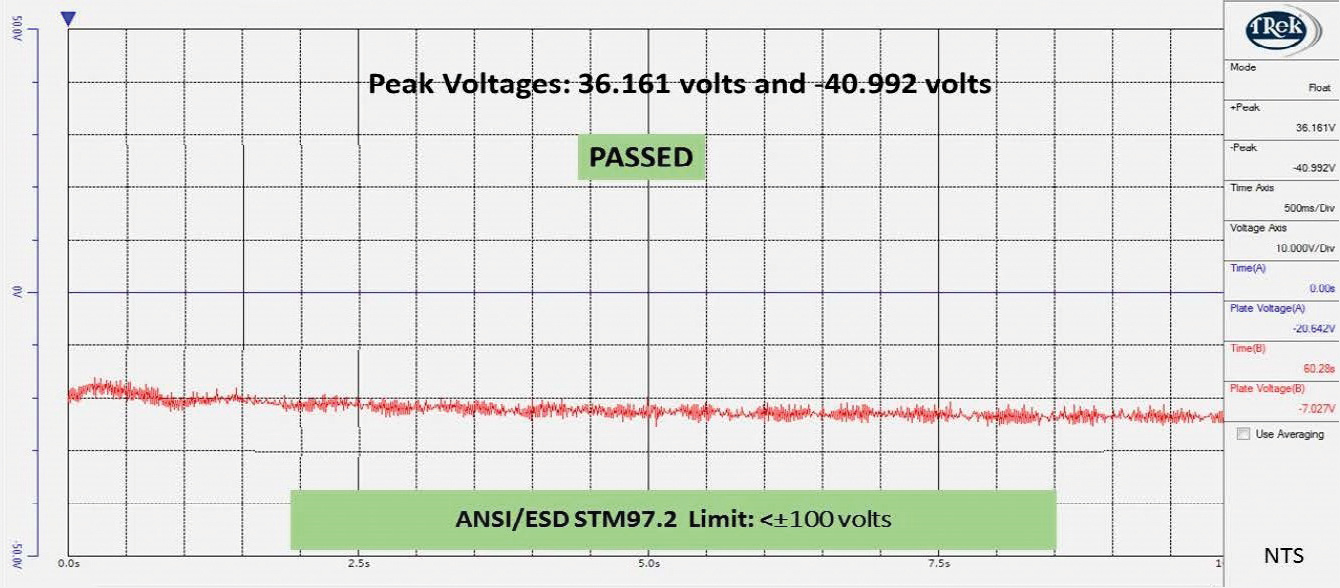
tatic control flooring is widely used throughout the electronics industry to provide a means to ground personnel and mobile equipment to control static charge generation and build-up. While I’d argue that it is always important to control static in an electronics manufacturing environment, there are some organizations where the risk of a device failure could have more serious consequences. This raises the bar in terms of managing the risk of failure and there are some things you should keep in mind when choosing static protective flooring to help with that.
- Preoccupation with failure
- Reluctance to simplify
- Sensitivity to operations
- Commitment to resilience
- Deference to expertise
- Preoccupation with failure
- Reluctance to simplify
- Sensitivity to operations
- Commitment to resilience
- Deference to expertise
These principles have been adopted across many complex industries, including aerospace, defense, nuclear power, air traffic control, automotive controls, and healthcare, in which the major failures can have catastrophic and/or life-threatening consequences. Karl Weich and Kathleen Sutcliffe have studied several of these industries and how they adopt principles of high reliability. 3,4,5,6
- Class 1 Electronics: General Electronics Products
- Class 2 Electronics: Dedicated Service Electronics Products
- Class 3 Electronics: High-Reliability Electronics Products
Within the ANSI/ESD S20.20 framework, flooring is primarily used as a means to ground personnel and mobile equipment. For personnel, it is intended to keep the voltage on personnel to below 100 volts and thereby ensure that any potential discharge from a person to a sensitive device falls below the limit of 100 volts HBM. To meet this objective, ANSI/ESD S20.20 set standards for flooring as follows:
- The complete system must have a resistance (point-to-point and point to ground) of less than 1.0 x 109 ohms as tested per ANSI/ESD STM7.1; 9
- The complete system of person-flooring-footwear must have a resistance to ground of less than 1.0 x 109 ohms as tested per ANSI/ESD STM97.1; 10 and
- The complete system of person-flooring-footwear must generate less than 100 volts as tested per ANSI/ESD STM97.2. 11
So, ANSI/ESD S20.20 is designed to control to 100 volts HBM. But what if the devices handled are more sensitive, that is, have a lower withstand threshold? For those situations, the standard simply states:
Or, what if there is a desire to limit HBM to below 100 volts simply to increase the margin of error for preventing a failure? Or, what if there is a desire to increase the reliability of a static control program beyond what an ANSI/ESD S20.20 program would provide?
ANSI/ESD S20.20 is viewed as providing a minimum set of standards that meet a vast majority of the needs in factory-level ESD controls. End users, trained in ESD controls, can expand upon the ANSI/ESD S20.20 controls to create more stringent requirements for their particular applications and many HROs do just that.
Members of this working group are involved with some of the most stringent ESD control programs in the world and bring to this project their vast knowledge of ESD controls. While the work is not yet published, the working group meetings are open to guests. If you are interested in learning more about this work, go to http://www.esda.org/events for a schedule of upcoming working group meetings.
- Conductive flooring system – has a resistance to ground of less than 1.0 x 106 ohms
- Dissipative flooring system – has a resistance to ground of greater than or equal to 1.0 x 106 ohms to less than 1.0 x 109 ohms
But the electronics industry is moving away from classifying flooring by grade. As noted above, ANSI/ESD S20.20 simply requires that flooring have a resistance of <1.0 x 109 ohms, so either of these “grades” will meet the requirement as long as they also meet the requirement for the walking voltage test when tested in combination with the footwear to be worn in the area.
While the flooring/footwear combination is extremely important in determining the body voltage generation, all else being equal, the lower the resistance of the flooring, the lower the body voltage.
Figures 1 and 2 show the test results of body voltage generated for two flooring systems. In these tests, the flooring systems were nearly identical, with the first being formulated to have a resistance in the conductive range and the second having a resistance in the dissipative range. The footwear and the person conducting the test were the same in both cases.
As you can see, while both systems passed the requirement of ANSI/ESD S20.20, the conductive floor generated significantly lower body voltage, which could be important in a very sensitive environment and would certainly reduce the risk of a potential failure due to an ESD event.
Also, as a floor gets dirty or ages, resistance levels may increase, potentially rendering the flooring-footwear system ineffective at achieving the desired level of protection. For these reasons, most of our HRO customers choose flooring that has a resistance of less than 1.0 x 106 ohms. This provides an added measure of security that the floor will still perform when dirty and that body voltages will be kept as low as possible in the area.
- Heel grounders
- Sole grounders
- Conductive shoes
- Conductive booties
- Heel grounders
- Sole grounders
- Conductive shoes
- Conductive booties
One other thing to consider with regard to footwear is the contact that it has with the floor. Heel grounds offer the least, while conductive shoes and conductive booties have the most. The better the contact with the floor, the less likely someone will become electrically disconnected from the floor as they move across it.
There have been many situations where one component in the system develops a resistance higher than desired, thereby causing the whole system to be out of compliance. In a high reliability environment, when choosing a flooring system, it would be prudent to understand all of these components and the risks associated with a potential failure in order to reduce the likelihood of a future non-compliance situation.
- The periodicity of testing: This is not prescribed in either ANSI/ESD S20.20 or TR53.The periodicity of testing should be regular enough to head off non-compliance, as determined by:
- Use and maintenance: If the floor is subjected to a lot of traffic and dirt, it may need to be checked more regularly. Likewise, the regularity and extent of floor cleaning will impact how often the floor should be checked.
- Life of electrical properties: Some flooring systems have lifetime electrical properties, while others, such as applied finishes, only last a few months.
- Any changes: The floor should be checked if there are any changes in use or maintenance practices and materials. Any of these could impact the performance of the floor.
- Past results: By monitoring results over time, you can get a sense of if or how the floor is changing over time and adjustments can be made to periodicity as appropriate.
- Incorporating regular walking body voltage tests: The procedure in ESD TR53 for verifying flooring is a simple check of resistance to ground. As noted previously, the body voltage generation is a critical measurement of the effectiveness of a flooring-footwear system. As such, walking body voltage measurements should be taken periodically following the procedure of ANSI/ESD STM97.2. Doing so will help ensure that that flooring system and the flooring-footwear combination is still providing the desired static control.
- The periodicity of testing: This is not prescribed in either ANSI/ESD S20.20 or TR53.The periodicity of testing should be regular enough to head off non-compliance, as determined by:
- Use and maintenance: If the floor is subjected to a lot of traffic and dirt, it may need to be checked more regularly. Likewise, the regularity and extent of floor cleaning will impact how often the floor should be checked.
- Life of electrical properties: Some flooring systems have lifetime electrical properties, while others, such as applied finishes, only last a few months.
- Any changes: The floor should be checked if there are any changes in use or maintenance practices and materials. Any of these could impact the performance of the floor.
- Past results: By monitoring results over time, you can get a sense of if or how the floor is changing over time and adjustments can be made to periodicity as appropriate.
- Incorporating regular walking body voltage tests: The procedure in ESD TR53 for verifying flooring is a simple check of resistance to ground. As noted previously, the body voltage generation is a critical measurement of the effectiveness of a flooring-footwear system. As such, walking body voltage measurements should be taken periodically following the procedure of ANSI/ESD STM97.2. Doing so will help ensure that that flooring system and the flooring-footwear combination is still providing the desired static control.
- Rochlin, Gene I., (1996-06-01), “Reliable Organizations: Present Research and Future Directions,” Journal of Contingencies and Crisis Management, 4 (2): 55–59. doi:10.1111/j.1468-5973.1996.tb00077.x. ISSN 1468-5973.
- Roberts, K.H., (1989), “New Challenges in Organizational Research: High Reliability Organizations,” Organization & Environment, 3 (2): 111–125. doi:10.1177/108602668900300202.
- Weick, K. E., Sutcliffe, K. M., and Obstfeld, D., (1999), “Organizing for High Reliability: Processes of Collective Mindfulness,” In B. M. Staw & L. L. Cummings (Eds.), Research in Organizational Behavior (Vol. 21, pp. 81-123). Greenwich, CT: JAI Press, Inc.
- Weick, K. E., and Sutcliffe, K. M., (2001), Managing the Unexpected: Assuring High Performance in an Age of Complexity, First Edition, San Francisco: Jossey-Bass.
- Weick, K. E., and Sutcliffe, K. M., (2007), Managing the Unexpected: Resilient Performance in and Age of Uncertainty, Second Edition,San Francisco, CA: Jossey-Bass.
- Weick, Karl E., Kathleen M. Sutcliffe, 2001, Managing the Unexpected – Assuring High Performance in an Age of Complexity, San Francisco, CA, USA: Jossey-Bass. pp. 10–17. ISBN 978-0-7879-5627-1.
- IPC International, “IPC-A-610H: Acceptability of Electronics Assemblies,” 3000 Lakeside Drive, 105N, Bannockburn, IL 60015.
- Electrostatic Discharge Association, “For the Development of an Electrostatic Discharge Control Program for Protection of Electrical and Electronic Parts, Assemblies and Equipment (Excluding Electrically Initiated Explosive Devices),” 7900 Turin Road, Bldg. 3, Rome, NY 13440.
- ANSI/ESD STM7.1, EOS/ESD Association, Inc. “Flooring Systems Resistive Characterization.”
- ANSI/ESD STM97.1, “Floor Materials and Footwear-Resistance Measurement in Combination with a Person STM97.1.”
- ANSI/ESD STM97.2, EOS/ESD Association, Inc. “Floor Materials and Footwear – Voltage Measurement in Combination with a Person.”
- ESD TR53, EOS/ESD Association, Inc., “Compliance Verification of ESD Protective Equipment and Materials.”


